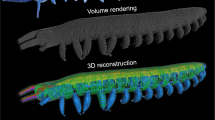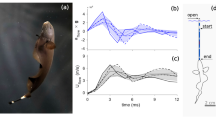Abstract
THE phenomenon of chambering in oysters and other lamellibranchs is well known, and in oysters is a source of much financial loss to some oyster planters. In a chambered oyster one extensive closed chamber or several superposed large chambers may occur enclosed within the shell substance—usually in the convex valve, but sometimes in both valves. The chambers are separated from each other or from the body of the oyster by thin brittle partitions of shell only, and contain usually an evil-smelling liquid. When a chambered oyster is opened, great care is required lest the brittle wall of the chamber be broken and the evil-smelling liquid released on the oyster, which would in that case be rendered unfit for eating.
This is a preview of subscription content, access via your institution
Access options
Subscribe to this journal
Receive 51 print issues and online access
$199.00 per year
only $3.90 per issue
Buy this article
- Purchase on Springer Link
- Instant access to full article PDF
Prices may be subject to local taxes which are calculated during checkout
Similar content being viewed by others
Author information
Authors and Affiliations
Rights and permissions
About this article
Cite this article
WORSNOP, E., ORTON, J. The Cause of Chambering in Oysters and other Lamellibranchs. Nature 111, 14–15 (1923). https://doi.org/10.1038/111014a0
Issue Date:
DOI: https://doi.org/10.1038/111014a0
This article is cited by
-
Do carbonate skeletons limit the rate of body growth?
Nature (1981)
Comments
By submitting a comment you agree to abide by our Terms and Community Guidelines. If you find something abusive or that does not comply with our terms or guidelines please flag it as inappropriate.



